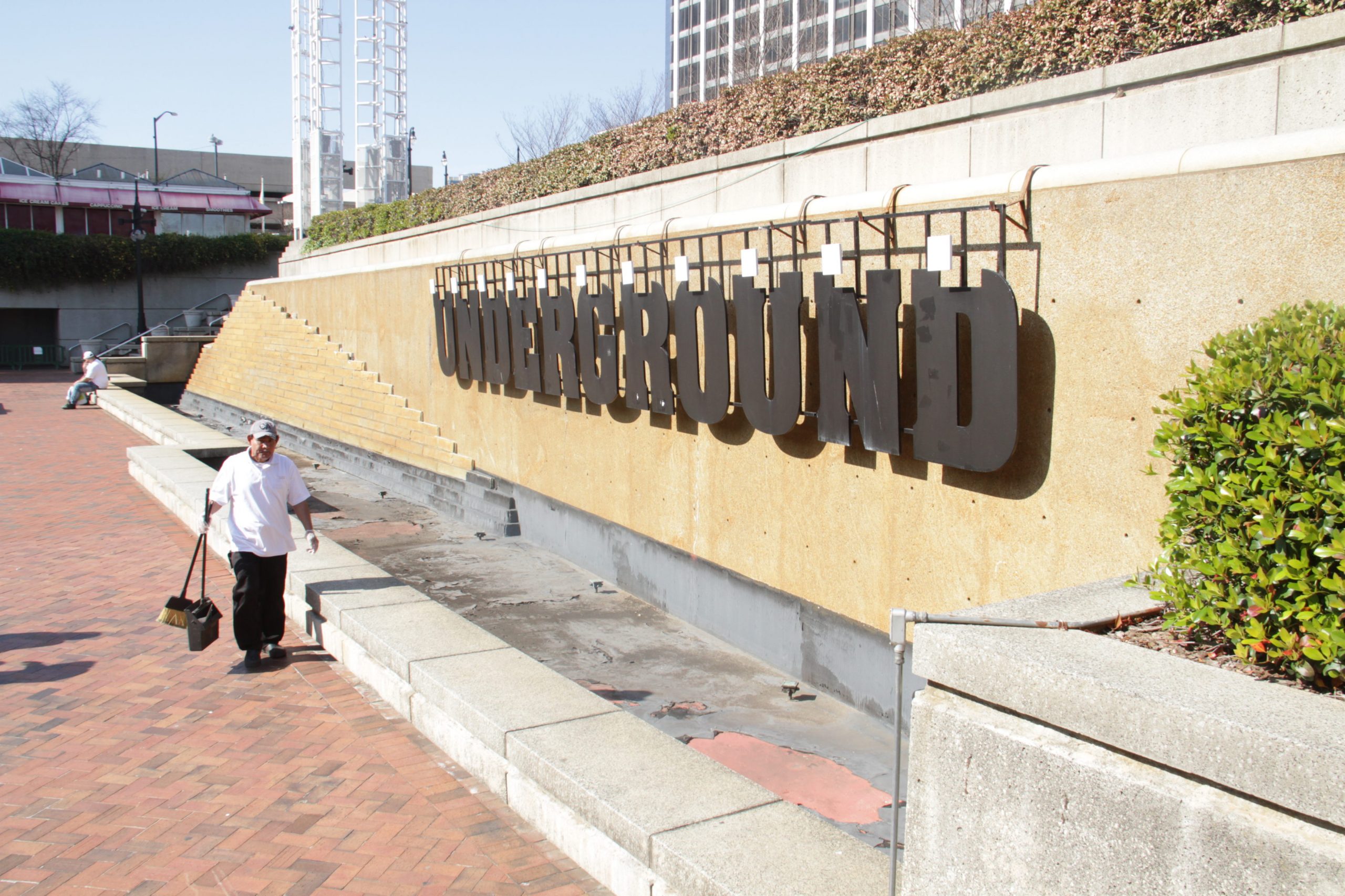
 Atlanta’s artistic community is part of what makes the city such a culturally diverse city; however, as the city expands economically, that community faces threats that could undermine its ability to create.
Atlanta’s artistic community is part of what makes the city such a culturally diverse city; however, as the city expands economically, that community faces threats that could undermine its ability to create.
A recent surge in economic development projects around the city has raised concerns within the Atlanta arts community about the possibility of both artistic displacement and the exploitation of artists.
Artistic displacement is a possible byproduct of gentrification. When neighborhoods are “revitalized,” the inhabitants of the neighborhood that contribute to the artistic culture of the surrounding area may be driven out or subverted by new artistic installations brought in by developers. The artistic community in the current Underground Atlanta property is in danger of facing this outcome as the property is set for redevelopment over the next few years. At a recent public meeting with WRS Realty, the firm redeveloping the property, members of the community gathered to voice their concerns and seek resolutions to the problems that they are set to face.
“Have you employed any historic preservationist or artist on your design table and do you plan to add them to your staff?” asked one concerned individual present. “As a member of that creative community, I would like to see you put your dollars and your employment energy into adding those people to your team, and quickly.”
Redevelopment projects such as the Underground redevelopment are often unavoidable and can bring about legitimate benefits to the surrounding area. Members of the “creative class” which this woman described simply want reassurance that as projects such as this take place, their community will not be tossed aside in favor of more profitable developments.
After Kevin Rogers, the development officer for WRS Realty that was questioned, responded to the question by saying that their team would take artistic input and expressing his hope that Underground could eventually become similar to artistic neighborhoods in Atlanta such as Little Five Points and Westside Atlanta, the concerned attendee raised an issue which is tied closely with Atlanta’s cultural development.
“Most of those examples … are neighborhoods that developed organically over time by the people that were there,” she said. “What you’re speaking of is coming down and doing a massive development, is not the same.”
The point she raised is one faced by creative communities around the country: the elimination of organically developed art communities in an effort to construct new communities that support profit growth, often including fabricated artistic culture. Gentrification projects do not allow for artistic themes to organically develop within communities, they eliminate the unique quality that true artistic districts exude. While development firms such as WRS Realty, as for-profit organizations, bear no obligation to put any effort into preserving artistic communities within the areas that they redevelop, some consideration should be put into maintaining the artistic culture developed by community members who have no say in whether or not the area they reside in will be redeveloped or not.
As economic development is pursued, an environment should be created that embraces organic art and allows for creators to contribute to Atlanta’s diverse web of culture. Even when the creative class is able to produce as it desires, though, it can often still face exploitation from groups motivated by profit.
In 2014, one of Atlanta’s most iconic collaborative art fixtures, the Krog Street Tunnel, which is known for its diverse graffiti art, was used by The Atlanta Foundation for Public Spaces as a venue for a masquerade. The event was being held to make a profit, tickets were sold to individuals seeking to attend. During the week leading up to the event, a large group of about 100 protesters made a trip to the tunnel and painted over all of the captivating graffiti art with grey paint.
The artists that left their mark in the tunnel felt as though the event organizers were taking advantage of their work by using it as a theme for a for-profit party that did not compensate the artists, specifically without the consent of many artistic community members who contributed to the iconic tunnel. Even when artists are able to organically create work as they please, it is very easy for them to be exploited for monetary gain.
In the face of this ease of exploitation, those seeking to spark economic development through property redevelopment should keep the interests of the creative class in mind as they embark on new projects; doing so is necessary to maintaining the organic artistic fibers that build Atlanta’s creative culture.
